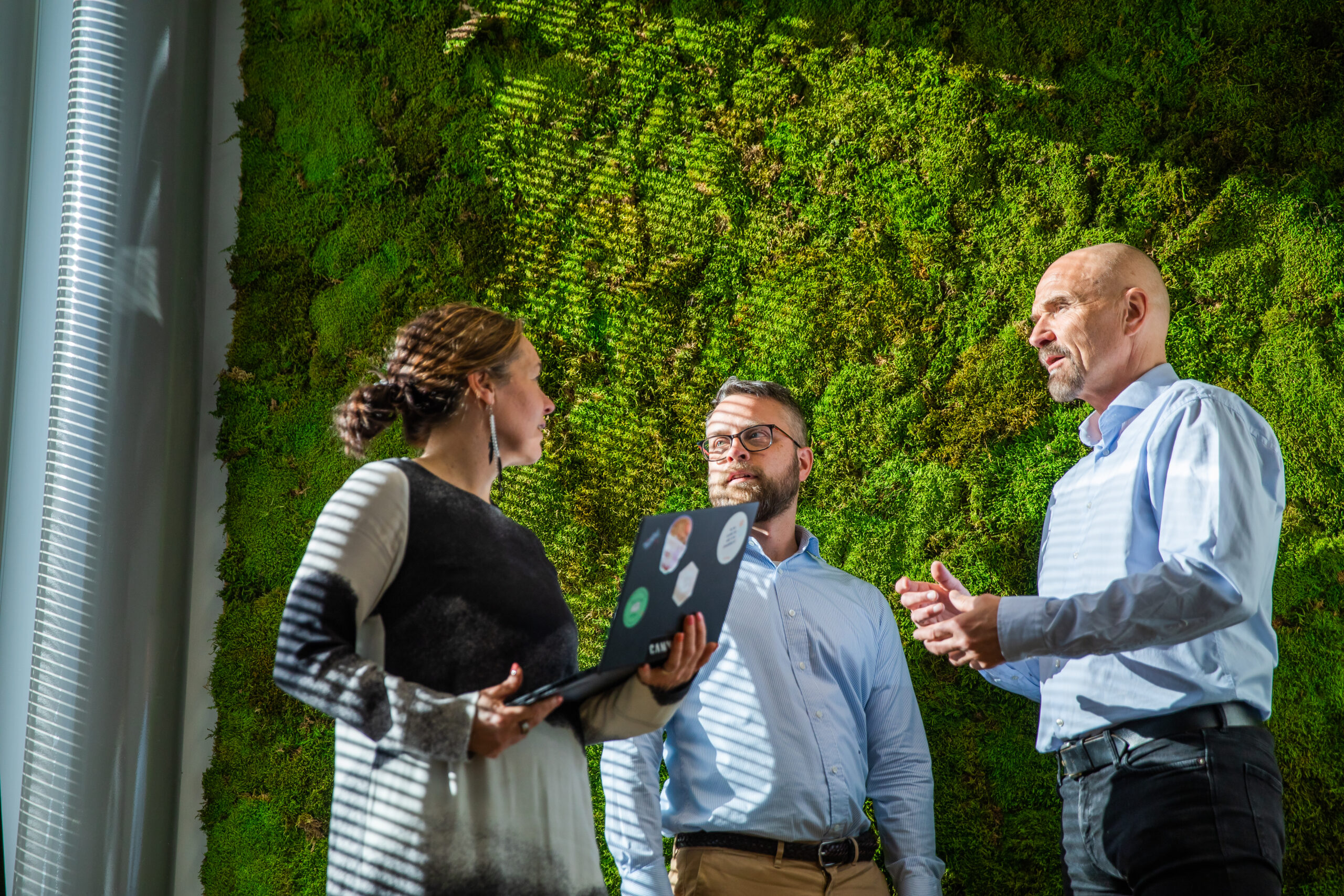Do you remember the first website you visited? Right then, do you recall of thinking that you are standing at the gates of a technological revolution that will permanently change the world? The advent of artificial intelligence into regular work life has been talked about for over a year now, and attitudes have fluctuated from enthusiasm to scepticism, much like in the early days of internet. Some organisations are still pondering their internal rules regarding the use of text bots like ChatGPT, while others have been incorporating AI into their business development for years.
A similar developmental trajectory can be recognised in the emergence of social media in the early 2000s: As one organisation fearlessly produced content according to their first social media strategy, another was left pondering whether they should join social media at all. History does repeat itself indeed.
Almost all changes have two sides: the technical and the human side. The integration of the internet and social media into our daily lives sure was a technological change, but above all, they have shaped human behaviour while influencing interpersonal communication and the ways we interact with each other. Artificial intelligence is hardly any less transformative in the workplace. The significant change that AI brings, however, is not related to technology but to the pressure to need to change the logics how we think and act in our work scene of the future.
How to lead the adoption of AI?
It has been estimated that AI will take over up to 40% of current known work tasks. Instead of entire job descriptions disappearing, it is conceivable that various tasks could disappear piecemeal from multiple roles.
From an individual perspective this can be agonising, even distressing. The entry of AI into the workforce is like dropping an effervescent tablet into a glass of water: the effect begins immediately, and the bubbles of its influence spread everywhere. Therefore, the entry of AI into the workforce is primarily a question of leadership: organisations must find sensible solutions and devise understandable plans for how the freed-up human time resulting from AI solutions will be utilised smartly and sustainably.
At the same time, this is a unique opportunity to rearrange the deep structures of work so that we can better utilise our unique human qualities such as intuition, reasoning, strategic planning, emotional intelligence, interpreting moods, reading the air, imagination, and empathy. If AI’s power lies in its ability to process large amounts of data rapidly and accurately, then human power lies in these unique human qualities that machines or AI find difficult, even impossible, to mimic. It is through these unique human qualities that we are able to navigate through various social situations, make ethical choices, and think critically. They are also the foundation of a sustainable and ethical digital society and workforce of the future.
Is your organisation currently considering how to make knowledge work more meaningful and effective with Generative AI? Watch webinar recording: Lead AI integration in a people-driven way
The goal of AI adoption: Zero waste attitude for human thinking
The automation of manual, monotonous, or computationally intensive tasks could be crucial for industries suffering from labour shortages if human expertise can be better focused where it is most needed. Could the guiding principle for the adoption of AI be a zero-waste mentality: directing human working hours towards the most value-producing activities, while straightforward or computationally intensive tasks are assigned to bots and machines?
Big-picture decisions and decision-making remain in the hands of humans; AI does the groundwork. In work processes, this can result in better quality and a more meaningful experience of work.
AI decisions are resilience decisions
AI experiments must start somewhere so that experience with it begins to accumulate. At the same time as we contemplate how many AI licenses or tools to purchase and for whom, the entry of AI must be managed like any other change.
How do we ensure that people keep up with the technological upheaval, where AI is integrated into our daily lives? How do we help people adopt new ways of thinking that AI usage in our daily lives requires? How do we ensure that AI licensing is effectively utilised by everyone and doesn’t end up being just an expensive search engine?
When deciding upon the use of AI, organisations must ask operational questions such as:
- Which parts of our work and processes are suitable for AI use and would bring efficiency?
- When we adopt AI, what does it require from our work processes? What new things need to be learned? Which familiar elements remain? What needs to be abandoned or unlearned?
And more strategic, future-oriented questions like:
- In the long run, to which current structures, roles, and job descriptions could AI have an impact on in our organisation?
- How can AI revolutionise the logic of operations on which our current work is based?
- Do we believe AI will affect our industry more broadly?
- What investments in AI are worthwhile and at what pace?
- What skills might be required in a conceivable AI world for our organisation in two, five, or even ten years? What do we need to start preparing for now to be operational then?
Choosing your seat: Driver or passenger?
We cannot define the future. However, we can choose whether we want to be the drivers and passengers of our optimal future. Organisations need to have the courage to look forward to mapping out an ideal future, tolerate uncertainty, engage in collective imagination, and engage in visionary scenario planning.



